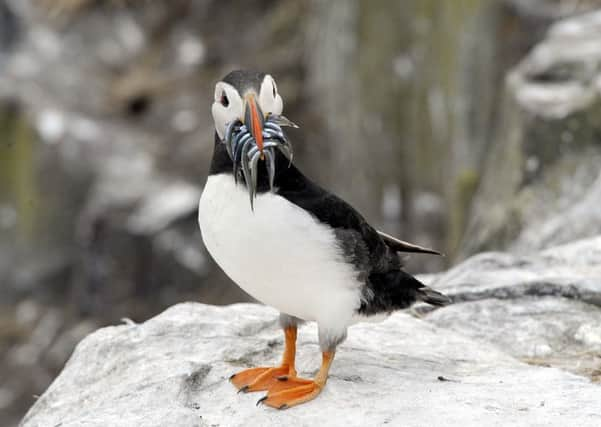Northumberland, Bird Club


At a full meeting of North Northumberland Bird Club in February, Dr Paul Morrison, site manager of the RSPB reserve on Coquet Island, presented an overview of this nationally important site.
Owned by the Duke of Northumberland, Coquet Island lies a mile offshore, east of Amble, and is now highly protected, unlike past times when it was inhabited, and later when people could land and picnic. The reason for this inaccessibility is what Paul Morrison described as the “bird assemblage”.
Advertisement
Hide AdAdvertisement
Hide AdAlthough the lighthouse keepers of the 1920s were paid to count the eiders, the site only became a reserve in 1970. Small and grassy, the island doubles in size when the tide is out. It has no facilities and power is solar generated.
The lighthouse and cottages are home to the warden and volunteers, without whom the island could not function as a reserve. Extensive renovation had to be done with care since the island is a Scheduled Ancient Monument because of monastic ruins.
The 46,000 nesting sea birds are the reason for its national and international importance. Designated as an SSSI and SPA, the island is carefully managed to provide the best possible habitats for terns and puffins.
Staff have to find ways of discouraging the large gulls that would predate the chicks. Methods vary from broadcasting gull alarm calls to going out in hi-vis jackets and flapping arms around.
Advertisement
Hide AdAdvertisement
Hide AdThe island is famed for its huge puffin population, a red-listed bird in the UK, with the Scottish population diminishing, and the breeding success of the Norwegian population declining. The reasons are unclear, but part of the work on Coquet Island is to monitor, observe and record so that the situations can be understood.
The island is home to four species of tern, which arrive in the spring to breed. Careful management provides suitable nesting sites for sandwich, arctic, common and roseate terns. The latter is the UK’s largest breeding population.
Common and Arctic terns are doing well, but sandwich terns are in decline. The work involved in creating the breeding habitat is immense, including bringing shingle onto terraces for the roseate terns, whose nesting boxes have to be placed in identical positions every year since the birds return to the same sites to build their ‘scrapes’ and lay eggs.
Staff still have to keep watch for egg thieves, as well as turn away people who hope to land. Protection of the birds and their nests is the priority.
Advertisement
Hide AdAdvertisement
Hide AdDr Morrison detailed the winter maintenance work, including removing invasive plant species and cleaning and sterilising the nest boxes
This was a talk full of interest, expertise and humour, illustrated by excellent slides that kept us all enthralled. Everyone was laughing as we watched video clips of puffins entertaining themselves with a variety of objects, including swings and mirrors.
We were left with a lasting impression of the tremendous conservation work done on places like Coquet Island and how lucky we are to have such a site on our doorstep, giving us all the opportunity to enjoy these visitors to our shores, albeit from a distance.